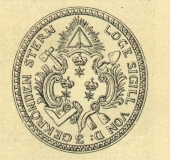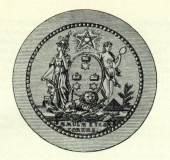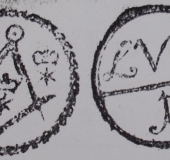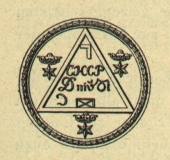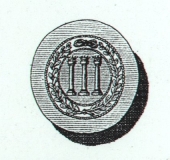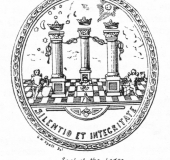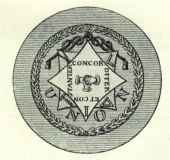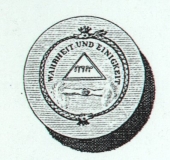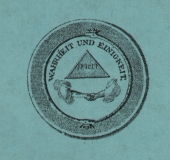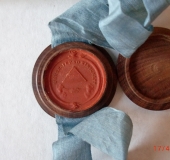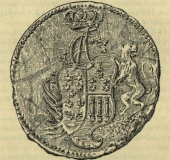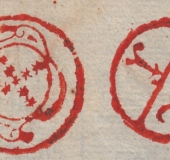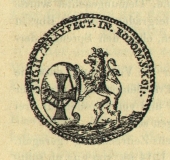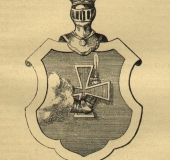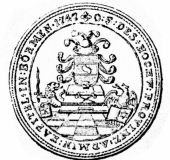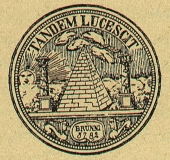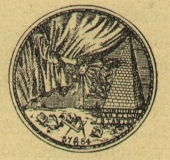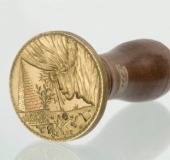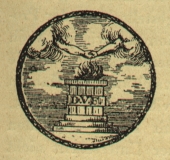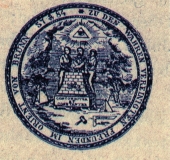Masonic seals
A seal is a device for making an impression in wax, clay, paper, or some other medium, including an embossment on paper, and is also the impression thus made.
Seals are used to primarily authenticate documents, specifically those which carry some legal import. There are two main ways in which a seal may be attached to a document. It may be applied directly to the face of the paper or parchment, (an applied seal); or it may hang loose from it (a pendent seal). A pendent seal may be attached to the document by cords or ribbons (sometimes in the owner’s colors); by a strip (or tag) of parchment threaded through a slot cut in the document, with its two ends joined together by the seal; or by a narrow strip of the material of the document (again, in this case, usually parchment), sliced and folded down, as a tail or tongue, but not detached from the document.
Historically, the majority of seals were circular in design, although ovals, triangles, shield-shapes and other patterns are also known. The design generally comprised a graphic emblem (sometimes, but not always, incorporating heraldic devices), surrounded by a text (the legend) running around the perimeter.
Sealing wax was naturally yellowish or pale brownish in tone, but could also be artificially colored red or green.
The use of seals in Freemasonry is basically the same as in public practice. Primarily lodge warrants, masonic certificates and other key documents will be authenticated with a seal. The seal design would inevitably apply a choice from a large collection of Masonic symbols. Wax seal were common in the 18th century and partly in the 19th. In modern times wax has been replaced by blind embossment on paper and rubber stamps. Only very few Masonic seals in wax have survived in the archives of the National Museum in Prague, Moravian Museum in Brno and the Silesian Land Museum in Opava.
© Jacob Sadilek
Click on picture to enlarge and read explanatory text. All shown items are in private possession unless mentioned otherwise.
